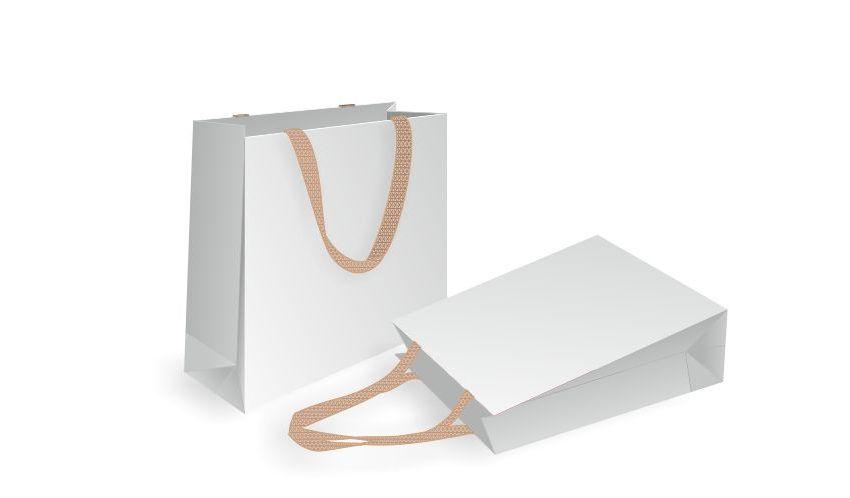Eco-Friendliness of Small White Paper Bags

Small white paper bags, a seemingly simple and ubiquitous item, play a crucial role in our daily lives. From retail stores and bakeries to craft fairs and gift shops, these bags are a staple in various industries due to their versatility, eco-friendliness, and aesthetic appeal. This article delves into the multifaceted world of small white paper bags, examining their history, manufacturing processes, environmental impact, usage across different sectors, design and customization options, market trends, and future prospects. Through this comprehensive exploration, we aim to highlight the significance and potential of these unassuming yet essential items.
History of Small White Paper Bags
The history of Small white paper bags dates back to the 19th century when Francis Wolle, an American inventor, created the first machine for mass-producing paper bags in 1852. This innovation marked the beginning of a new era in packaging, providing a practical alternative to cloth and burlap sacks. Initially, paper bags were plain and primarily used for carrying groceries and other small items.
The evolution of paper bags saw significant advancements over the years. In 1871, Margaret Knight, an employee at a paper bag factory, invented a machine that could produce flat-bottomed paper bags, making them more stable and capable of carrying bulkier items. This invention earned her a place in history as one of the first female inventors to receive a patent.
Small white paper bags, specifically, gained popularity in the mid-20th century as a clean, simple, and versatile packaging solution. Their neutral color made them ideal for a wide range of uses, from food service to retail. The simplicity of white paper bags also lent itself well to branding and customization, allowing businesses to print logos and designs directly onto the bags, enhancing their marketing efforts.
Manufacturing Process
The manufacturing process of small white paper bags involves several steps, each contributing to the final product’s quality and durability. The process begins with the selection of raw materials, primarily wood pulp, which is processed into paper. The paper used for these bags is typically bleached to achieve the desired white color. Bleaching is a chemical process that removes lignin, the natural substance in wood that gives it color, resulting in a bright, clean white paper.
Once the paper is prepared, it is cut into sheets of the appropriate size for the bags. These sheets are then fed into a bag-making machine, which folds, cuts, and glues the paper into the desired shape. The machine creates the bag’s body, bottom, and handles (if applicable) in a continuous process. Modern bag-making machines are highly efficient and can produce thousands of bags per hour.
Quality control is a critical aspect of the manufacturing process. Each bag is inspected for defects, such as improper gluing or uneven edges, to ensure that only high-quality products reach the market. Manufacturers also conduct tests to check the bags’ strength and durability, ensuring they can hold the intended contents without tearing or breaking.
Environmental Impact
One of the most significant advantages of small white paper bags is their environmental friendliness. Unlike plastic bags, which can take hundreds of years to decompose, paper bags are biodegradable and recyclable. This makes them a more sustainable choice for consumers and businesses looking to reduce their environmental footprint.
The production of paper bags, however, is not without its environmental challenges. The paper industry is known for its high water and energy consumption, as well as the release of pollutants during the bleaching process. To mitigate these impacts, many paper bag manufacturers are adopting more sustainable practices, such as using recycled paper, implementing water-saving technologies, and reducing chemical use in the bleaching process.
Furthermore, the disposal of paper bags also has environmental implications. While they are biodegradable, paper bags still require proper waste management to ensure they decompose efficiently. Composting is an excellent way to dispose of used paper bags, as it allows them to break down naturally and return nutrients to the soil.
Uses in Various Industries
Small white paper bags are incredibly versatile and find applications in a wide range of industries. In the retail sector, they are commonly used for packaging small items such as clothing, accessories, and gifts. Their clean and simple appearance makes them an attractive choice for retailers looking to provide a pleasant shopping experience while promoting their brand.
In the food service industry, small white paper bags are used for packaging baked goods, snacks, and takeaway items. They are a popular choice for bakeries, cafes, and restaurants due to their ability to keep food fresh and their environmentally friendly nature. Grease-resistant linings can be added to these bags to prevent oils and moisture from seeping through, making them suitable for a variety of food products.
Craft fairs and markets also make extensive use of small white paper bags. Artisans and vendors often use these bags to package handmade goods, from jewelry and candles to soaps and small art pieces. The bags’ plain white surface provides a blank canvas for creative designs, allowing vendors to add personal touches that reflect their brand and products.
Design and Customization
One of the key features that make small white paper bags so appealing is their potential for customization. Businesses can easily print their logos, slogans, and other branding elements directly onto the bags, turning them into effective marketing tools. This customization not only enhances brand visibility but also adds a professional touch to the packaging.
Design options for small white paper bags are virtually limitless. Companies can choose from a variety of printing techniques, including offset printing, screen printing, and digital printing, each offering different levels of detail and color accuracy. Additionally, special finishes such as embossing, debossing, and foil stamping can be added to create a premium look and feel.
Customization is not limited to printing. The size, shape, and style of the bags can also be tailored to meet specific needs. For instance, handles can be added for easier carrying, and different closure options, such as twisted paper handles or ribbon ties, can enhance the bag’s functionality and aesthetics. These design possibilities make small white paper bags a flexible and attractive packaging solution for businesses of all sizes. If you want to know more information about wax paper bags visit TopUSAPackaging.
Market Trends
The market for small white paper bags has seen significant growth in recent years, driven by increasing consumer awareness of environmental issues and a shift towards sustainable packaging solutions. As more businesses adopt eco-friendly practices, the demand for paper bags continues to rise, outpacing that of traditional plastic bags.
One notable trend is the growing popularity of reusable paper bags. These bags are made from thicker, more durable paper and are designed to be used multiple times, reducing the need for single-use bags. Reusable paper bags are often reinforced with additional materials, such as fabric handles, to enhance their strength and longevity.
Another trend is the incorporation of innovative materials and technologies into paper bag production. For example, some manufacturers are experimenting with biodegradable coatings and inks, making the bags even more environmentally friendly. Others are exploring the use of alternative fibers, such as bamboo and hemp, to produce paper bags that are both sustainable and unique.
The rise of e-commerce has also influenced the market for small white paper bags. Online retailers are increasingly using paper bags as part of their packaging strategies to appeal to environmentally conscious consumers. These bags are often used as inner packaging within larger shipping boxes, providing an extra layer of protection while enhancing the unboxing experience.
Future Prospects
The future of small white paper bags looks promising as sustainability continues to be a driving force in consumer and business decisions. With advancements in manufacturing technologies and a growing emphasis on eco-friendly practices, the paper bag industry is poised for continued growth and innovation.
One area with significant potential is the development of biodegradable and compostable coatings for paper bags. These coatings can provide additional functionality, such as moisture resistance, without compromising the bag’s environmental benefits. Research into alternative raw materials, such as agricultural waste and recycled fibers, is also likely to yield new possibilities for sustainable paper bag production.
The trend towards customization and personalization is expected to continue, with businesses seeking to create unique and memorable packaging experiences for their customers. Advances in printing technology will enable more intricate and high-quality designs, further enhancing the appeal of small white paper bags.
Conclusion
Small white paper bags, while often overlooked, are a vital component of modern packaging solutions. Their versatility, environmental benefits, and potential for customization make them an ideal choice for a wide range of applications across various industries. As consumer preferences shift towards sustainability and businesses seek innovative ways to enhance their branding, the demand for small white paper bags is set to grow. By embracing sustainable practices and leveraging new technologies, the paper bag industry can continue to thrive, providing eco-friendly and aesthetically pleasing packaging solutions for years to come.

